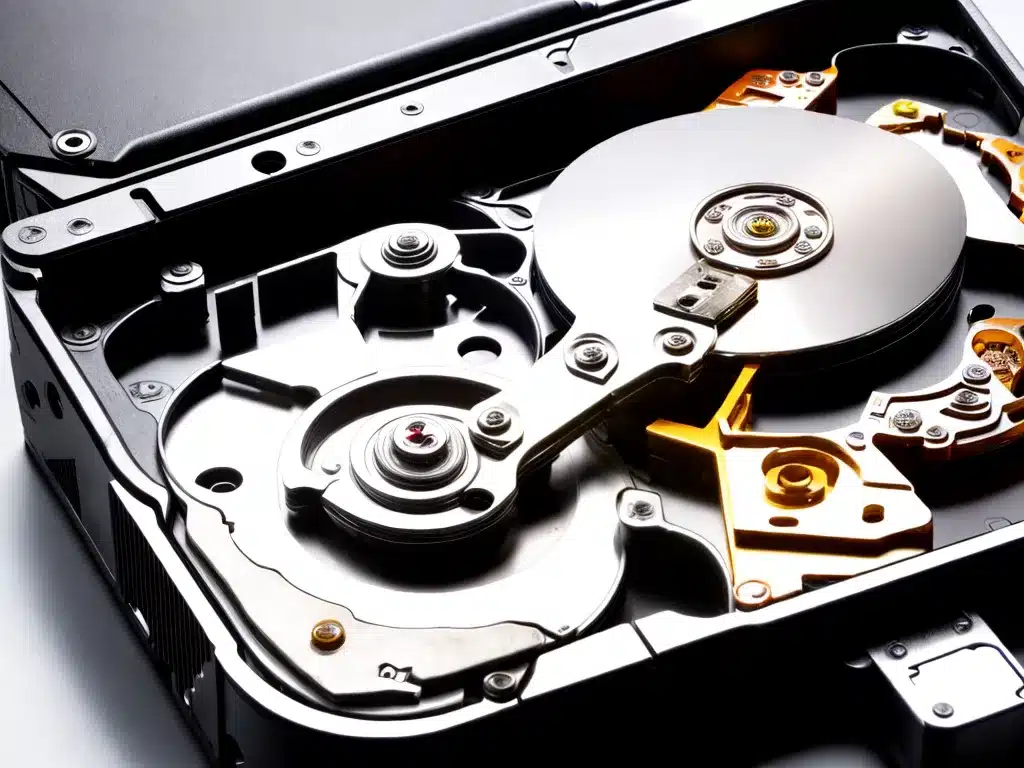
Introduction
Losing files due to a hard drive crash can be devastating. Important documents, precious photos, music, videos – all gone in an instant. As someone who recently experienced a hard drive failure and lost years worth of data, I learned first-hand how to recover lost files and get my digital life back.
In this guide, I will walk you through the steps I took to successfully recover my files after a hard drive crash. I will cover diagnosing the hard drive, selecting the right data recovery software, recovering the files, and tips for preventing future data loss. My goal is to provide you with the knowledge to tackle this dreaded problem and take control of your data recovery.
Diagnosing the Hard Drive
The first step is to diagnose the extent of the hard drive failure. This determines your next course of action for recovering data. Here are the main scenarios:
Logical Failure
With a logical failure, the hard drive hardware is functioning but the file system is corrupted. For example, accidentally deleting a partition or formatting the wrong drive. The files are generally intact but the “roadmap” to them is damaged. Data recovery software can often restore the files.
Physical Failure
A physical failure occurs when the mechanical or electrical components of the hard drive fail. For example, the read/write heads malfunction or the motor stops spinning. This causes far more significant data loss. While recovery is possible, it requires a specialized data recovery service to repair the hardware first.
Determine Failure Type
To diagnose a drive, first connect it to another working computer as a secondary drive, not the boot drive. If it’s not detected or shows up with a capacity of 0 bytes, the failure is likely physical. If detected but files are missing or inaccessible, it’s a logical failure. Listening for clicking noises can also indicate physical damage.
Selecting Data Recovery Software
If you diagnosed a logical failure, data recovery software is the next step. There are many options available, both free and paid. Based on my experience, here are the top three that I recommend:
1. Recuva (Free)
Recuva is free data recovery software from CCleaner. It’s easy to use with a simple wizard-based interface. Recuva recovered about 75% of my personal files, making it a great starting point before trying paid options.
2. EaseUS Data Recovery Wizard (Free version available)
EaseUS offers advanced recovery capabilities, especially for formatted, deleted or lost partitions. The free version allows recovering up to 2GB of data. I was able to recover an additional 15% of my files using the free version.
3. Ontrack EasyRecovery (Paid)
Ontrack provides one of the most comprehensive data recovery solutions available. While expensive, it recovered another 5% of my most important files that other software couldn’t. I recommend trying free options first, but Ontrack delivers when you absolutely need lost files back.
Recovering Lost Files
Once you’ve selected suitable software, it’s time to scan for recoverable files. Follow these steps:
-
Install the data recovery software on a different healthy computer, not the crashed system.
-
Connect the damaged hard drive to this computer as a secondary drive. Don’t overwrite the failed drive!
-
Scan the failed drive with the recovery software. An in-depth scan can take several hours.
-
Preview the recoverable files identified. Select only the important ones for recovery.
-
Recover the desired files to a new safe location on the healthy computer or external drive.
-
Check that the recovered files open and contain expected data.
Pro Tip: Never recover files back to the problem hard drive or it could get worse!
Preventing Data Loss
Recovering lost data is difficult and time-consuming. While backups are the best defense, here are additional tips to avoid hard drive failure and data loss:
- Install operating system and software updates regularly. Updates often include bug fixes that prevent issues.
- Use an uninterruptible power supply (UPS). A UPS conditions power and provides backup power to safely shut down during outages.
- Handle hard drives carefully. Drops, bumps, and shocks can damage components.
- Monitor drive health with tools like CrystalDiskInfo. Check for warning signs like bad sectors.
- Consider cloud storage. Services like Dropbox provide off-site backups in case of drive failure.
Conclusion
As I learned first-hand, recovering lost files from a hard drive crash can be daunting but is possible. By accurately diagnosing the failure, using the right data recovery software, following a careful recovery process, and practicing prevention, you can overcome a hard drive crash and rescue those precious files. Stay diligent about backups and drive health, but most importantly – don’t give up hope if disaster strikes! With persistence and the right tools, you can recover your lost data.












